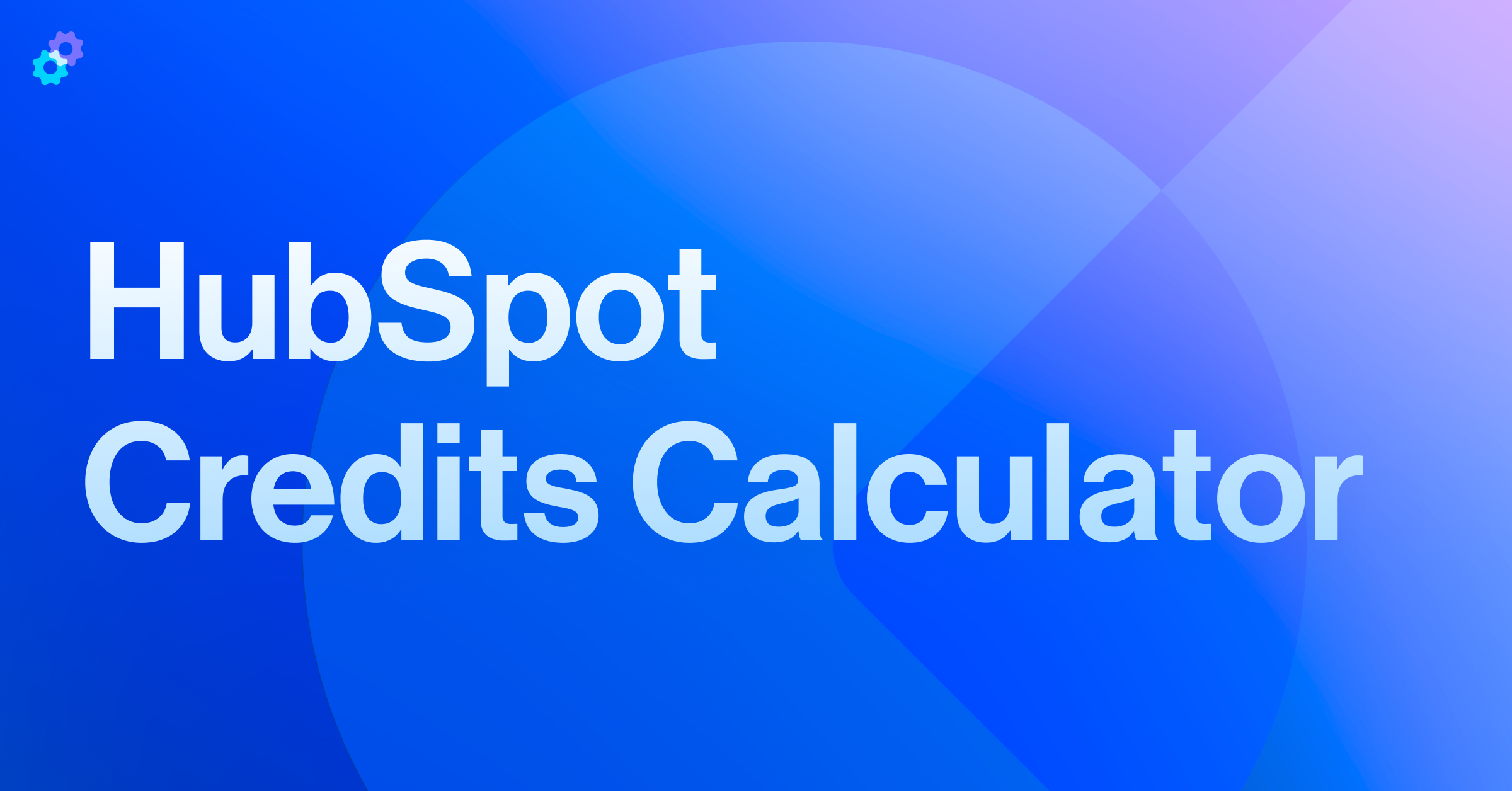For years, HubSpot users have relied on the platform’s built-in quoting tool to generate proposals. It got the job done, but for growing sales teams, it often meant creating workarounds for approvals, inconsistent templates, or disconnected pricing logic.
That’s why HubSpot CPQ (Configure, Price, Quote) has been one of the most anticipated launches since HubSpot’s 2023 acquisition of Cacheflow, a B2B billing and CPQ platform.
Unveiled at INBOUND 2025, HubSpot CPQ represents the next stage in the evolution of HubSpot Quotes: a more connected, governed, and scalable way to create, manage, and approve quotes within the same system that powers your CRM and pipeline.
What Is HubSpot CPQ?
Configure, Price, Quote (CPQ) software helps companies configure product offerings, apply pricing rules, and generate quotes or proposals for customers.
HubSpot CPQ is HubSpot’s native solution that brings quoting into the same platform where your deals, contacts, and pipeline already live. Unlike the legacy Quotes feature in Sales Hub, CPQ lives within Commerce Hub, which unifies quoting, billing, and payments in one connected experience.
That means no more disconnected systems or third-party integrations. Sales reps can create, send, and manage quotes entirely within HubSpot. RevOps and finance teams gain a single source of truth for deal, quote, and revenue data, while built-in governance features like approval workflows help maintain consistency and accuracy.
HubSpot CPQ replaces the old quoting experience with a modern interface that supports richer templates, advanced pricing options, and data-driven oversight. It feels familiar to Sales Hub users but is far more capable and scalable.
Why HubSpot Built CPQ
HubSpot CPQ was designed to bring structure, accuracy, and connectivity to the quoting process for organizations that have outgrown the limits of legacy Quotes. HubSpot’s product team set out to solve common pain points that often cause inefficiency and friction between sales, RevOps, and finance:
- Cold start problem: Traditional quoting forces sellers to start from scratch after receiving verbal approval, leading to delays and inconsistency. HubSpot CPQ solves this with reusable templates, AI-assisted content, and dynamic quote generation that uses CRM data to pre-fill details automatically.
- Disconnected revenue data: When quotes are built in Word docs, PDFs, or third-party tools, CRM data and revenue data drift apart. CPQ eliminates those silos by keeping everything native to HubSpot, ensuring accurate forecasting and reporting.
- Limited governance: Legacy quotes lacked approval controls. CPQ introduces automated approval workflows that trigger based on discount thresholds, total quote value, or specific products, giving sales teams freedom while maintaining financial oversight.
- Inconsistent deal data: When multiple quotes existed on a deal, it wasn’t always clear which was final. CPQ now syncs the signed quote back to the deal record, automatically updating line items and maintaining alignment across departments.
- Outdated buyer experience: Buyers expect a digital experience, not static PDFs and endless revisions. CPQ enables interactive, web-based quotes with built-in e-signature and optional chat assistance for faster feedback and fewer errors.
The result is a quoting system that’s not just easier to manage but fundamentally more reliable, aligning the entire revenue process inside HubSpot’s connected platform.
Key Features of HubSpot CPQ
HubSpot CPQ introduces powerful new functionality for sales and finance teams. Here are the most important features:
1. Customizable Quote Templates
The improved drag-and-drop quote builder makes it easy to create on-brand, professional templates. Add sections like an “About Us,” implementation plans, or FAQs. Attach documents like MSAs or brochures. Admins can lock critical sections (such as Terms & Conditions) while allowing reps to personalize others.
2. AI-Assisted Quote Creation
HubSpot CPQ uses Breeze AI to generate parts of the quote, like a cover letter or executive summary. Reps can even use prompts to adjust line items, such as “apply a 15% discount to all items.” Instead of starting from scratch, sales teams can use context from your CRM to build quotes, review, and send.
3. Built-In Approval Workflows
HubSpot CPQ comes with built-in approval workflows where admins can configure simple or advanced logic-based approval rules. For example, you can set a rule that requires a manager sign-off if a discount exceeds 20% if the deal value is above $100k, or if specific line items are used. Sales reps see in real time when a quote triggers an approval and why, so they can adjust immediately.
4. Flexible Pricing Models
HubSpot CPQ adds advanced pricing options to the product library:
- Volume pricing (price per unit drops once a threshold is met).
- Graduated pricing (different unit prices applied at each tier).
- Stairstep pricing (flat fee per tier range).
This eliminates manual calculations for discounts and ensures consistent, accurate pricing. Bundles and price books are on HubSpot’s roadmap to extend flexibility further.
5. Quote-to-Deal Sync
When a quote is signed, the associated deal is automatically updated to match its line items. This eliminates the mismatch that previously existed between signed quotes and deal data.
6. E-Signature and Payments
Quotes are sent as interactive web pages where buyers can review, sign electronically, and even pay online if HubSpot Payments is enabled. This removes friction, speeds up the deal cycle, and unifies the quote-to-cash process.
7. Closing Agent (AI-Powered Chat)
Unique to HubSpot, the Closing Agent is an AI chatbot embedded in the quote. It can answer buyer questions, provide additional context, and escalate to a rep when needed. This creates a self-service buying experience while keeping deals moving, even outside business hours.
Pricing and Packaging
Commerce Hub itself is bundled into every HubSpot subscription, with only transaction fees applied when you process payments. With the launch of CPQ, HubSpot added two new seat types that unlock the advanced quoting functionality:
- Commerce Hub Professional — $85 per user per month
- Commerce Hub Enterprise — $140 per user per month
However, users must also have a Sales Hub seat to create or manage quotes since CPQ leverages Sales Hub’s core features and pipeline data.
Legacy Quotes remain available for existing customers, but new quoting functionality, including templates, pricing logic, and approval workflows, requires CPQ.
Who Is HubSpot CPQ a Good Fit For?
Like any CPQ solution, HubSpot’s isn’t one-size-fits-all. It’s designed with certain types of companies in mind, and may not be the best match for every sales organization. It is designed for small and midsize organizations that need a connected, reliable quoting process inside HubSpot.
Best fit if you:
- Use HubSpot and want to manage quoting natively.
- Have a moderate product catalog (under 100 SKUs).
- Sell SaaS, services, or subscription-based offerings.
- Need approval rules, auditability, and data accuracy between deals and quotes.
- Want to move off PDFs, Word docs, or legacy quoting tools.
Less ideal if you:
- Require rule-based configuration or guided selling logic.
- Have large, complex product catalogs (1,000 or more SKUs).
- Operate in industries with specialized quoting needs, such as manufacturing.
In short, CPQ gives growing teams a smarter, more controlled way to quote without the heavy lift of enterprise platforms.
Getting Started with HubSpot CPQ
Here’s how to implement CPQ successfully in your HubSpot portal:
- Assign Seats: Ensure you have the necessary Commerce Hub Pro or Enterprise seats. Assign seats to any users who will handle quoting directly.
- Set up your product library: Add products, SKUs, and pricing models (including tiered pricing).
- Create templates: Use the drag-and-drop builder to design branded quote templates with the right sections and attachments.
- Configure approval workflows: Define rules for discounts, deal size, or other criteria.
- Enable payments (optional): Connect HubSpot Payments to collect deposits or payments directly from quotes.
- Train your team: Walk reps through creating and sending quotes, using AI assistance, and managing approvals.
- Standardize: Migrate all users to CPQ and avoid mixing with legacy quotes.
- Monitor and optimize: Track time-to-quote, approval turnaround, and acceptance rates. Iterate on templates and workflows as needed.
HubSpot CPQ is a major step forward for growing companies that want to streamline quoting without adding another disconnected tool. By embedding CPQ into HubSpot’s Commerce Hub, it gives sales teams the ability to configure, price, and quote faster while keeping data unified in the CRM.
Process Pro’s Take: Implementation Insights from the Field
At Process Pro Consulting, we’ve helped many organizations evaluate and implement HubSpot’s revenue tools. What we’ve seen consistently is this: successful CPQ rollouts start with process clarity, not software setup.
Here are a few lessons from our experience:
- Define your approval paths before configuration. Decide how quotes flow through your organization, who approves what, at which thresholds, and why. Building this logic first saves hours later.
- Clean your product library. A messy catalog will cause problems no matter how good the quoting tool is. Simplify SKUs and naming conventions before migrating to CPQ.
- Plan for setup time. Implementing CPQ isn’t a quick project. Between template creation, product cleanup, workflows, and training, expect a 40–60 hour rollout for most teams.
- Align post-sale processes early. Quoting is just the start. Think through how quotes connect to invoicing, subscription management, and revenue recognition.
HubSpot CPQ’s strength lies in how it brings quoting, approvals, and revenue data together in one place. The real value comes from configuring it around a well-defined process, not just turning it on.
HubSpot CPQ marks a major step forward in HubSpot’s evolution from CRM to full revenue platform. By re-architecting quoting within Commerce Hub, HubSpot has turned what was once a lightweight sales tool into a governed, data-driven system that can scale with growing organizations.
HubSpot CPQ won’t fit every business, but for small-to-mid-sized teams with smaller product catalogs, it’s a powerful new tool that can accelerate growth.
Need help implementing HubSpot CPQ in your portal? Contact the Pros.







